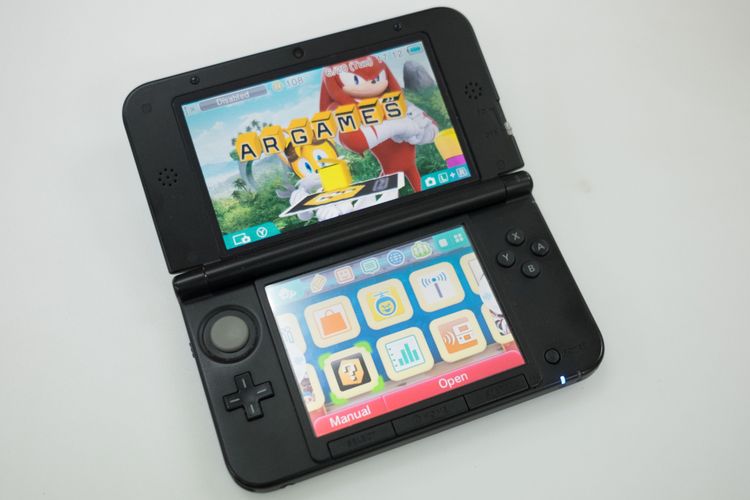

The console was equipped with a 32-bit Intel Celeron/Pentium III hybrid CPU clocked at 733MHz. Microsoft decided to invest and iterate on this design, which eventually paved the way for the Xbox to use the PC's x86 architecture, which was rare for a console at the time. An early prototype was put together by Microsoft engineers as a side project using Dell laptop parts.
Whats in the white door in super mario 64 ds Pc#
Arguably the closest the Redmond, Washington-based company had gotten to launching a console was when it developed a custom version of Windows CE for the Sega Dreamcast that supported a version of its DirectX API.Īfter seeing how Sony's console business was detracting from PC game sales and fearing that the rival company would own the living room with the PlayStation 2, Microsoft decided to release its own system to compete. Prior to its launch, Microsoft's major gaming efforts had been focused on the PC, where its Windows operating system held a monopoly on the market. It retailed for $300 and launched within the sixth generation of consoles, which made it the first major gaming system to be created by an American company since the Atari Jaguar. Microsoft debuted its original big, black, and green Xbox in North America on November 15, 2001. Melee, The Legend of Zelda: The Wind Waker, Metroid Prime, Pikmin, Eternal Darkness, Resident Evil 4, Paper Mario: The Thousand-Year Door Notable Games: Super Mario Sunshine, Super Smash Bros. While the comparatively limited storage size wasn’t an issue for many developers, many cross-platform ports had to be compressed or remove features to fit on Game Discs.Ĭompeted against: Sega Dreamcast, Sony PlayStation 2, Microsoft Xbox Piracy concerns continued to be one of the main reasons for the proprietary format. These Game Discs stored up to 1.5GB of data, which were dwarfed by DVDs that offered up to 8.5GB. While the system was Nintendo’s first console to use optical discs without the need of an add-on device, they were a smaller proprietary format made in partnership with Panasonic. With it, the GameCube was able to output a 640x480p resolution. The system also featured 43MB of RAM and used ATI’s Flipper graphics chip clocked at 162MHz. It was based on a simple RISC architecture, which Nintendo implemented in hopes of winning back third-party developers it had lost with the N64.

It was capable of delivering 1.9 GFLOPS of power. Underneath the chassis, the system used IBM’s PowerPC Gekko CPU clocked at 486MHz. Its built-in handle also added to its kid-centric aesthetic. Nintendo eventually released several color variants, but the GameCube debuted in two colors: black and a bold indigo hue-the latter gave the console a toyish look. In total, the GameCube sold 21.7 million units.ĭespite the moniker, the system wasn’t actually a true cube, with unequal dimensions that measured 5.9圆.3x4.3 inches. Not only did Sony’s wildly popular PlayStation 2 dwarf the GameCube in sales, but it was also bested by Microsoft’s debut Xbox console. The sixth generation of consoles gave Nintendo its stiffest market competition yet. In North America, it released three days after the original Xbox on November 18, 2001. Nintendo launched the GameCube in Japan on September 14, 2001. for Wii U, Splatoon, Super Mario Maker, Super Mario 3D World Notable Games: Mario Kart 8, Super Smash Bros. The GamePad also supported motion controls, haptic feedback, and near-field communication-a feature that allowed users to sync Nintendo’s Amiibo figures to the console.Ĭompeted against: Sony PlayStation 4, Microsoft Xbox One The tablet-like controller featured a 6.2-inch resistive touchscreen along with dual analog sticks, a D-pad, and several face buttons. Internal tech specs aside, arguably the most significant feature of the Wii U was its GamePad. For graphics, AMD developed its Latte GPU clocked at 550MHz. The Wii U featured IBM’s Espresso CPU clocked at 1.24GHz, and it was coupled by 2GB of DDR3 RAM. The system’s specs were co-developed by Nintendo, AMD, IBM, and Renesas. Like the Wii before it, the Wii U wasn’t a graphical powerhouse, but it was the first Nintendo system to support 1080p. The white base model of the Wii U launched for $299 and came with 8GB of storage, but there was also a Deluxe black version that came with 32GB of storage and included a sensor bar.

It has sold 13.5 million units, which makes it Nintendo’s lowest-selling major console to date. Despite breaking into our top 20 list, the console’s name confused many, as some people mistakenly took it to be an add-on for the Wii. Nintendo launched its Wii U console on November 18, 2012.


 0 kommentar(er)
0 kommentar(er)
